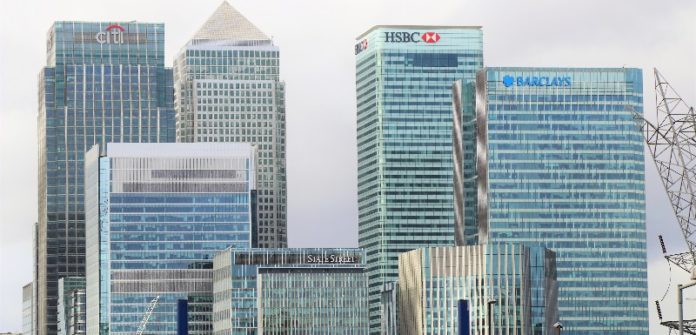Future monetary policy will need to change to be effective says Gavin Brown and Dr Richard Whittle from Manchester Metropolitan University
As we sit here, still in the early stages of lockdown anxiously waiting for the next government announcement, amongst the fear and worry, there is a surprising ray of light. The ‘magic money tree’ has bloomed. Numerous governments have provided the types of monetary economic support which as recently as last Christmas were unthinkable to governments and unimaginable to large parts of the general public as well.
The UK’s Coronavirus (COVID-19) fiscal package is conservatively estimated at circa £400 billion, or up to 15% of GDP, which compares to just 1.4% and 6% of GDP for stimulus packages implemented during the preceding 2007-09 Financial Crisis for the U.K. and U.S., respectively. More broadly, for the G20 countries alone, the size of fiscal stimulus for the 2007-09 Financial Crisis amounted to $2 trillion, or circa 1.4 per cent of world GDP.
In short, the size of the total global governmental response in 2007-09 is equivalent to just the U.S. response to Coronavirus today, when not adjusted for inflation…..for now! Coronavirus is therefore a much MUCH bigger financial event, not to mention the societal, well-being and second order detrimental implications which we are yet to fully understand.
Historically, the U.K. austerity narrative revolves around the understanding of money as being finite. However, this current crisis has fundamentally altered political ideologies. A Tory Chancellor is providing a social support net of which previous Labour Chancellors such as Alistair Darling and Gordon Brown could have only dreamt.
Government view of money has changed, society’s view is changing too. The seeds for this were sewn back in 2008 when the pseudoanonymous Satoshi Nakamoto released her/his paper entitled ‘Bitcoin: A Peer-to-peer Electronic Cash System’. Following this nine-page document and eleven years since the first Bitcoins were created in the Genesis Block on the 3rd January 2009 we now have more than 5,000 cryptocurrencies with an aggregate market value of just under US$ 200 billion. However, with total global money valued in excess of US$ 80 trillion, cryptocurrencies are, by comparison, approximately four hundred times smaller by market value.
A Tory Chancellor is providing a social support net of which previous Labour Chancellors such as Alistair Darling and Gordon Brown could have only dreamt.
Nonetheless, even pre the Coronavirus Black Swan event, humanity has a three-way standoff/struggle, (or Mêlée à Trois), for the future of money. Decentralised cryptocurrencies such as Bitcoin vs non-sovereign corporate currencies such as Facebook’s ‘Libra’ and J.P. Morgan’s ‘JPM Coin’ vs the next incarnation of government fiat currencies known as CBDCS, or Central Bank Digital Currencies.
The Bank of International Settlements (BIS), (who are the central bank of central banks), conducted a global survey in early 2020, concluding that, ‘70% of banks are engaged in or about to start CBDC work’. This has been followed up with the creation of a knowledge sharing group on CBDC’s in January 2020 by The European Central Bank, BIS and the central banks of Canada, England and the Sveriges Riksbank as well as the Swiss National Bank.
Although in part the Coronavirus crisis may be only exacerbating a trend of a change in this individual view of money. As people move from cash to digital money their perceived value of it falls. The cash in your pocket diminishes as you spend it, your contactless card keeps working until it is too late! Indeed a potential outcome of this crisis where people are rapidly changing views on the value of money is the possibility of debt accumulation.
If an excess of money can’t buy you toilet roll, is it worth as much as you thought it was? If society’s view of money devalues, expect dissaving and a preference for goods over money. When you derive more personal utility from holding grocery goods than their market value would suggest then we are at a tipping point, or even a disconnect, between perceived and actual monetary worth.
Money may again be changing from society’s viewpoint. From money being a commodity and having a perceived value in its own right, to facilitating and accessing the wider value of people, workers and social institutions. Perhaps through panic buying and shortages, the idea of what you have in the bank being only worth what it can buy is returning. It is rapidly becoming clear that the value we previously placed on money was far too high and the value previously placed on unskilled (now often key workers) was far too low.
In trying to abate this ‘crisis of our generation’ we are holding a mirror to our debt fuelled economies and the flaws of our existing monetary systems and policies.
In microcosm, much of our present struggles, and questionable monetary solutions, are typified by the recent plans of Michigan Democratic Rep. Rashida Tlaib. She is proposing that two $1 trillion platinum coins should be minted and sold to the Federal Reserve, which would then credit the U.S. Treasury with the proceeds in order to fund President Trump’s US$2 trillion Coronavirus stimulus package. Who needs to issue debt and suffer the turmoil of the international Treasury Debt markets when as a Government you own the magic money tree and harvest the seigniorage benefits which it yields?
In trying to abate this ‘crisis of our generation’ we are holding a mirror to our debt fuelled economies and the flaws of our existing monetary systems and policies. Consequently, the future of money is uncertain but with surety, in our humble opinion at least, it is no longer fit for purpose and will need to change if monetary policy is to continue to be an effective policy tool for nations the world over.
Government assistance today through furlough arrangements, mortgage holidays, free overdrafts and support for the self-employed, etc is the medicine that we arguably need today. But, this ‘kick the can down the road’ present is gifted under a quid pro quo arrangement through likely higher taxes and reduced spending post COVID. Whether we are paying the future price in quids remains to be seen.







